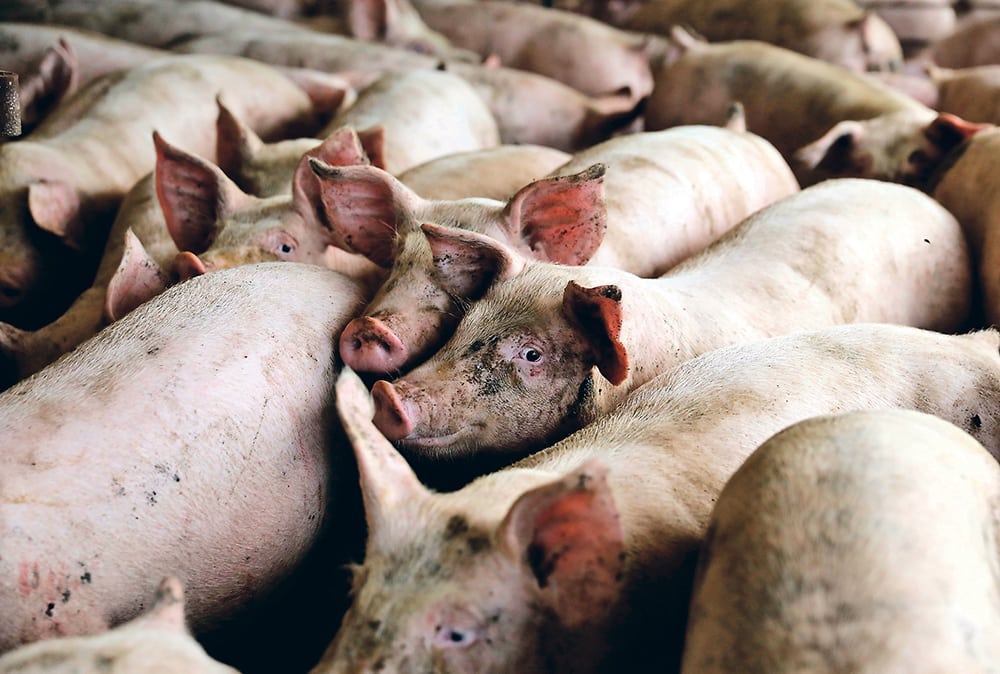For more than two weeks, China has imposed a tariff of 62 percent on pork imports from the United States.
At that punitive rate it’s possible that no U.S. pork is moving into China, a country of 1.4 billion where the average person consumes 40 kilograms of pork per year, the highest rate in the world after Brazil.
The tariffs are now at 62 percent because of the trade war between the U.S. and China, which unofficially began in April.
“China announced a new 25 percent tariff in response to U.S. action,” the U.S. National Pork Producers Council said July 6.
Read Also

Volatile temperatures expected for this winter
DTN is forecasting a lot of temperature variability in the Canadian Prairies this winter. Precipitation should be close to average.
“That tariff is on top of the 25 percent punitive duty levied by China in early April…. U.S. pork already had a 12 percent tariff on exports to China.”
On top the Chinese tariffs, Mexico is now collecting a 20 percent duty on U.S. pork.
The tariffs are a response to U.S. action. This spring, President Donald Trump hit Mexico, Canada and many other nations with tariffs on steel and aluminum. As of July 6, the U.S. began collecting tariffs on $50 billion worth of Chinese goods.
The battle is part of Trump’s war against unfair trade practices, as he has repeatedly said that the U.S. loses on trade with Europe, China, Mexico and Canada.
Canadian hog producers compete with U.S. farmers in the Chinese market, but it’s hard to know if Canada’s pork industry is benefitting from the trade war or not.
“It’s a bit too soon to really understand the impact. We have no … current data released as to whether there is any sort of bump, specifically in the Chinese market,” said Gary Sturdy, the Canadian Pork Council’s director of government and corporate affairs.
“The last (data) we have is April.”
In 2017, Canada exported about $570 million worth of pork to China, the third largest export destination after the U.S. and Japan. The Chinese market is particularly significant for offal. Canada sold $178 million in organ meats and intestines to China in 2017, compared to $20 million to Japan.
While it’s possible that Chinese buyers are turning to Canadian pork suppliers, it’s unlikely that pork exporters are seeing a boom in sales because China increased its pork production in recent years.
“The Chinese domestic price was going to be lower (in 2018),” Stordy said.
“That puts a downward pressure on imports (into China).”
Plus, Canadian hog farmers cannot press a switch and suddenly produce more pork for the Chinese market. Other countries and domestic customers also need pork from the approximately 22 million pigs slaughtered in Canada annually.
“We kind of go, ‘whoa, this (trade war) is going to be great. Canada is going to be able to sell a whole bunch more pork (to China),’ ” Stordy said.
“In theory that sounds good … (but) a lot of what we’re already shipping that could go to China is already going to China, and the increased demand isn’t going to make (that) much of a difference.”
In the short term, Canada may not see a boom in pork sales to China, but if the China-U.S. trade war drags on for months, it’s possible Canada could grab a larger share of the Chinese pork market for three, four or five years at the expense of U.S. producers.
Leaders of American farm groups have been saying for months that it will be difficult for exporters of pork, soybeans and other ag commodities to regain the trust of Chinese clients.
“Once you lose a market, it is really hard to get it back,” said Minnesota Farm Bureau president Kevin Paap, as reported by American newsletter Agri-Pulse.
Canada’s ag industry learned that lesson the hard way in South Korea.
In 2011, Canada exported about $1 billion worth of food to South Korea. By 2014, that figure was cut in half, thanks to South Korea signing free trade deals with the European Union, the U.S. and Australia.
“Canadian pork had a strong presence in the Korean market. On average it was about $250 million in sales,” Stordy said.
“The United States got ahead of Canada with its FTA (free trade agreement) … and that market shrunk by about 60 percent.”
Canada’s free trade agreement with South Korea took affect Jan. 1, 2015, but the damage and loss of market share for Canadian exporters still lingers.
“To get that back you have to invest time and energy … making the connections and demonstrating you do have that product available and (that it’s) cost competitive,” Stordy said.
“It’s only now that we’re becoming more competitive (in Korea).”
In 2017, Canada sold $133 million worth of pork to South Korea.
















